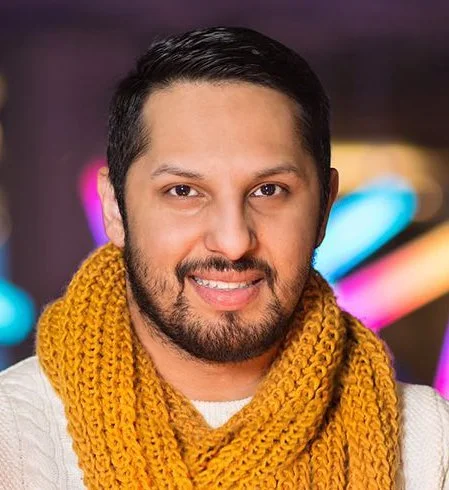Queer Attachment: Expanding Paths to Connection and Belonging
Queering Attachment: Beyond Expected Toward Expanding
Part One | Part Two | Part Three
In Part One of this series (Queer Attachment: Expanding Paths to Connection and Belonging), we examined how queering normativity reshapes mental health, highlighting the influence of collective identities and narratives within the queer community. In Part Two, we’ll explore how queering attachment theory redefines emotional intimacy, security, and belonging, creating and expanding space for Queer identities.
two people recline on a wrought iron bed frame. one person, in green plaid, has their head on the lap of another person in a green sweater. they gaze at each other tenderly.
Attachment: Beyond the Expected
The concept of attachment theorizes how our early relationships with caregivers shape our ability to form secure or insecure emotional bonds. It’s a neat and tidy framework… until you try to squeeze queer experiences into it. This framework was developed largely within heteronormativity and cisnormativity, with traditional attachment theory assuming that secure attachment is most often cultivated in childhood through consistent, responsive caregiving, usually within a nuclear family. This framework has been undeniably valuable in understanding connection, it misses a key reality: Queer people often experience attachment outside of these prescribed structures—and sometimes, despite them.
Dominant societal narratives don’t just shape individual attachment experiences, they also influence how caregivers understand and respond to their children’s identities. Attachment isn’t a solo act—it’s social, collective, and deeply embedded in cultural belonging. For Queer people, early attachment experiences might be laced with familial rejection, secrecy, and erasure. Traditional attachment models assume that primary caregivers provide safety and affirmation, but many Queer people grow up in environments where their identities are questioned and invalidated rather than celebrated. The assumption that emotional security must come from caregivers (primarily a biological family) overlooks the ways Queer people experience attachment in alternative, nontraditional ways. Enter: chosen families, Queer communities, and collective resistance as vital sources of connection and affirmation.
Queering Attachment: Chosen, Not Given
Queer attachment challenges the rigid assumptions, recognizing that intimacy, security, and belonging can often be found outside of conventional family structures. Queer people have been at the forefront of redefining attachment, showing that love and safety are not bound by blood but built through intention. Chosen families—those we intentionally build with friends, partners, and community members—often become primary sources of security and validation, offering the warmth that traditional structures sometimes fail to provide.
Deep platonic intimacy? Absolutely valid. Fluid relationship structures? Essential. Interdependent networks of care that defy the idea that attachment must be exclusive to romantic or familial bonds? A cornerstone of queer survival and joy.
By queering attachment, we unlock new ways of understanding emotional connection. Rather than viewing attachment as something that must be established early in life or strictly within a family system, we recognize that security and belonging are ongoing, evolving processes. Security and belonging are not destinations, they are continuously co-created across different life stages, relationships, and social spaces.
Queer attachment reminds us that love, trust, and stability are not confined to a one- size-fits-all model. They thrive in the spaces where we are truly seen, deeply valued, and free to exist as our most authentic selves. Expanding our understanding of attachment doesn’t just affirm queer experiences, it invites everyone to reimagine what it means to connect, care, and belong.
Stay with us as we continue to explore how queer attachment redefines the way we relate to ourselves, each other, and the world around us.
Aziz Mirza (he/him) is a clinician with Our Landing Place. He’s the author of the Queer Attachment Series on this blog and will be leading an upcoming presentation at 2025’s Queering Mental Health on similar themes.
We’re lucky to share Aziz’s thoughtful work here on the OLP Blog.


